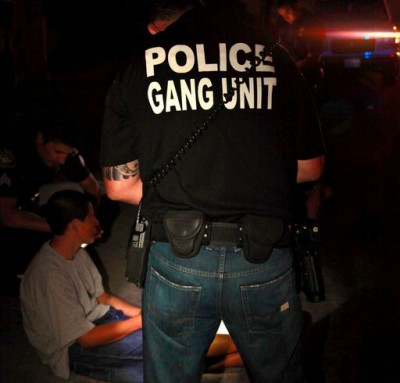Just this week I was speaking with a community member about gangs in her city. She’s very active in a number of organizations and boards and considers herself well informed about what’s going on in the city.
That was before a visit to her local police department.
During her tour, she was introduced to the gang detail. She got to see a gang map of the city that showed areas claimed by gangs. She got to see photos of gang graffiti and was shown gang-related crime statistics. She was flabbergasted that as involved and informed as she felt, she had little or no knowledge about gang activity in her city.
Whose fault is that?
Probably the police.
Ever since I’ve been a police officer, there has been an unwritten policy of never publicly identifying gangs — a policy adhered to by both the news media and law enforcement agencies.
The thinking was you don’t acknowledge gangs by name when reporting the crimes they’ve committed because it’s unwise to provide any notoriety to gangs, thereby encouraging them. You don’t want gang members to flaunt their criminal achievements and successes by saving newspaper clippings and newscasts.
That policy has been practiced by law enforcement and accepted by the news media with few exceptions over the last 40 years.
The world has changed a lot since those days. Gangs no longer need mainstream media to promote themselves. Just a quick search of social media and the Internet will lead you to Facebook, Twitter, YouTube and blogs where gang members are posting pictures and dissing each other.
Most gang-related shootings get relegated to Page two or three in the local section of the newspaper. It’s rare for television news media to cover gang shootings. A story about gang members killing other gang members just doesn’t have much news value.
More than two decades of working with communities to address crime has led me to believe that informed citizens are some of the best tools we have for dealing with crime. Crime isn’t just a police problem, but a community problem.
Providing information about gangs, the areas they claim and the crimes they commit just might be enough to motivate communities to take action.
I don’t think I’d like to be a Realtor whose property listing is in a gang area. I am very aware of how sensitive city administrators and councils are in having their communities identified with gang activity.
We have nearly four decades of doing business in a manner that seeks to minimize gangs. The world has changed a lot since then. In communities where crime-related information is only a smart-phone call away, it makes sense to provide information about gangs and the crimes they commit.
For the sake of complete transparency, it’s time we started telling people what’s going on when it comes to gangs in their communities.
And you don’t have to go to your local police department to find out about gangs in your community. Google has already done it for you:
Google Map of California Gangs
Joe is a retired Anaheim Police Department captain. You can reach him at jvargas@behindthebadgeoc.com.
 Behind the Badge
Behind the Badge



